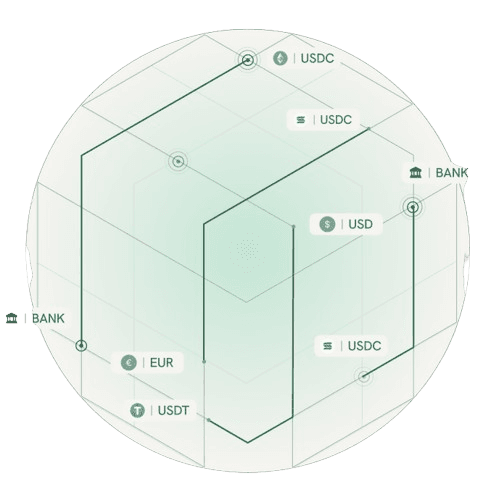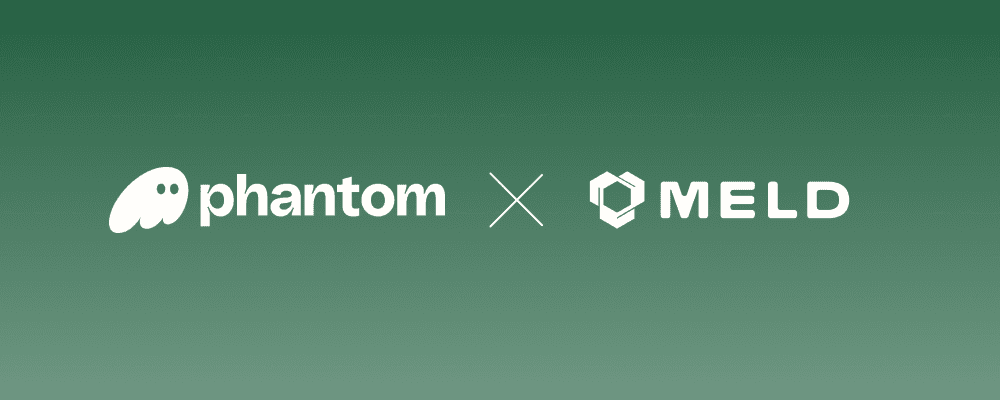
Introducing Meld Network: Access Digital Assets Anywhere
Digital Assets • Stablecoins • Identity • Network
Nov 18th, 2025
Crypto Stack • Onramps • Offramps • Payments • NFT Checkout
Integrating NFTs in your FinTech Stack for maximum impactMay 12th, 2023 | 6 mins

In recent years, Non-Fungible Tokens (NFTs) have emerged as a groundbreaking innovation, disrupting various industries and captivating the imagination of creators and investors alike. While their impact on the art and entertainment sectors is widely known, NFTs also offer immense potential for the FinTech industry. In this blog post, we will explore why fintech developers should consider integrating NFTs into their platforms and how these digital assets can revolutionize financial services.
One of the key benefits of NFTs in the fintech domain is their ability to establish verifiable ownership and provenance. By utilizing blockchain technology, NFTs provide an immutable record of transactions, ensuring transparency and reducing fraud. This feature is particularly valuable in the context of financial assets, such as digital securities, intellectual property, and even real estate. Fintech developers can leverage NFTs to streamline and automate processes like asset transfer, title deeds, and royalties, reducing administrative overhead and increasing trust.
NFTs enable the tokenization of traditionally illiquid and inaccessible financial assets, unlocking new avenues for investment and liquidity. Fintech platforms can tokenize real-world assets like real estate, collectibles, and commodities, allowing fractional ownership and democratizing investment opportunities. This opens doors for individuals who previously lacked access to such assets due to high entry barriers. Additionally, NFT-based tokenization allows for greater liquidity, enabling fractional trading, and expanding the potential investor base.
Offer your customers 600+ tokens and 40+ payment methods through Meld! Learn more here
Identity management is a critical aspect of fintech, and NFTs can play a significant role in securing digital identities. By creating unique digital assets tied to an individual's identity, NFTs can establish a trust anchor in the digital world. This can help prevent identity theft, ensure compliance with Know Your Customer (KYC) regulations, and streamline the onboarding process for financial services. The decentralized nature of NFTs allows users to have control over their digital identity while maintaining privacy and reducing the reliance on centralized intermediaries.
NFTs provide a fertile ground for the creation of novel financial instruments, pushing the boundaries of traditional financial services. Fintech developers can leverage NFTs to design innovative derivatives, options, and insurance products. For example, insurance policies can be tokenized as NFTs, allowing for automated claims processing and instant settlement. Moreover, programmable NFTs can incorporate smart contract functionality, enabling dynamic ownership structures, revenue sharing mechanisms, and conditional payments, revolutionizing traditional financial agreements.
The integration of NFTs into fintech platforms introduces gamification elements, fostering user engagement and loyalty. By incorporating NFTs, developers can offer users unique digital assets as rewards, collectibles, or achievements tied to specific financial activities. This incentivizes users to actively participate in financial services, whether it's saving, investing, or budgeting. The element of scarcity and rarity associated with NFTs adds excitement and value to the user experience, making financial management more engaging and enjoyable.
For developers looking to give your users the option to buy NFTs on your platform, Meld is here to help you manage your Crypto Stack. With a single integration to Meld's API, you get access to a host of onramps - all for the work of one.
Let your users purchase their NFTs instantly via NFT Checkout - a solution that allows customers to buy NFTs using a debit or credit card instantly. With a single integration to Meld's API, you get access to a host of onramps that offer this feature - like Moonpay and Onramp Money.
Have users who want to purchase their NFTs using crypto but need to top up their balance? With just a few lines of code and Meld's prebuilt wizard, lets your customers choose from 600+ tokens and use hyper-local payment methods (like PIX or IMPS) to make their purchases.
Learn more about how Meld is helping developers unlock crypto here
The inclusion of NFTs in the fintech ecosystem holds tremendous potential for innovation, transforming the way we interact with financial assets and services. From establishing transparent ownership to enabling tokenization, securing digital identities, fostering innovation, and enhancing user engagement, NFTs offer a wide array of benefits for fintech developers. By embracing this emerging technology, developers can unlock new opportunities, drive financial inclusion, and create a more efficient and user-centric financial landscape. The future of fintech is being shaped by NFTs, and those who embrace this transformation will be at the forefront of this exciting evolution.
And amidst it all, Meld is here to help developers build and launch faster than ever! Learn more about how to launch in weeks instead of sprints here.
Q: What is an NFT, and how is it different from a cryptocurrency?
An NFT, or non-fungible token, is a unique digital asset stored on a blockchain like the Ethereum blockchain. Unlike cryptocurrencies like Bitcoin, which are fungible and can be exchanged for one another, NFTs are unique and cannot be exchanged for other tokens at a 1:1 ratio.
Q: How does the Ethereum blockchain ensure ownership verification for NFTs?
The Ethereum blockchain uses smart contracts to ensure ownership verification for NFTs. When a user creates an NFT, it is associated with a unique smart contract on the blockchain that includes all the relevant information about the asset, including its ownership history. This ensures the asset is always verifiable and can't be duplicated or tampered with.
Q: What popular NFT projects and artwork have gained mainstream attention?
Some popular NFT projects and artwork include CryptoKitties, Bored Ape Yacht Club, Axie Infinity, and Top Shot NBA. These projects have gained widespread attention for their innovative use of NFTs and have helped to bring the technology into the mainstream.
Q: Why is the ERC-721 standard necessary for creating and exchanging non-fungible tokens?
The ERC-721 standard is essential for creating and exchanging NFTs because it provides a standardized way to create and manage unique digital assets on the Ethereum blockchain. This standard allows developers to create interoperable NFTs that can be used across different platforms and marketplaces, making it easier for users to buy, sell, and trade these assets.
Q: What makes digital art a widespread use case for non-fungible tokens?
Digital art is a popular use case for NFTs because it allows artists to create and sell unique digital works that are verifiable, traceable, and can't be duplicated or tampered with. NFTs provide a secure and transparent platform for artists to sell their work directly to collectors, bypassing traditional intermediaries like galleries and auction houses. Additionally, the scarcity and uniqueness of NFTs make them highly collectible, driving up their value in the marketplace.

Introducing Meld Network: Access Digital Assets Anywhere
Digital Assets • Stablecoins • Identity • Network
Nov 18th, 2025

Meld Partners with Phantom to Enhance Global Crypto Access
Aug 19th, 2024

Simplifying Crypto Purchase with One Click Checkouts
Crypto Stack • Onramps • Offramps
January 8th, 2023